
Ace of Base is a Swedish pop group, formed in 1987, originally consisting of siblings Jonas, Linn, and Jenny Berggren, with Ulf Ekberg.

"Cruel Summer" is a song by English girl group Bananarama. It was written by Bananarama and Steve Jolley, Tony Swain, and produced by Jolley and Swain. Released in 1983, it was initially a stand-alone single but was subsequently included on their self-titled second album a year later. The song reached number eight on the UK Singles Chart in 1983 and the group performed it live on the BBC's Top of the Pops that summer, and after its inclusion in the 1984 film The Karate Kid, it reached number nine on the US Billboard Hot 100.

"Can't Help Falling in Love" is a song recorded by American singer and actor Elvis Presley for his fourth soundtrack album, Blue Hawaii (1961). It was written by Hugo Peretti, Luigi Creatore, and George David Weiss and published by Gladys Music, Inc. The melody is based on "Plaisir d'amour", a popular French love song composed in 1784 by Jean-Paul-Égide Martini. The song was initially written from the perspective of a woman as "Can't Help Falling in Love with Him", which explains the first and third line ending on "in" and "sin" rather than words rhyming with "you".

"Come Baby Come" is a song by American rapper K7 featuring vocals by Camille, released by Tommy Boy Records as the first single from the rapper's debut album, Swing Batta Swing (1993). The song peaked at numbers 18 and 15 on the US Billboard Hot 100 and Cash Box Top 100 in December 1993, and number three on the UK Singles Chart in January 1994. It was produced by Joey Gardner and received positive reviews from music critics. The song was also certified gold by the Recording Industry Association of America (RIAA) on November 17, 1993. The accompanying music video was directed by Hype Williams and filmed in Jersey City, New Jersey.
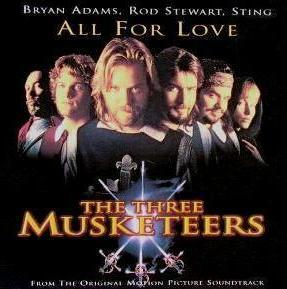
"All for Love" is a song written by Bryan Adams, Robert John "Mutt" Lange, and Michael Kamen for the soundtrack The Three Musketeers: Original Motion Picture Soundtrack. It is performed by Adams, Rod Stewart, and Sting. The power ballad was released as a CD single in the United States on November 16, 1993, by A&M and Hollywood. It was a worldwide hit, reaching number one across Europe, in Australia and in North America.
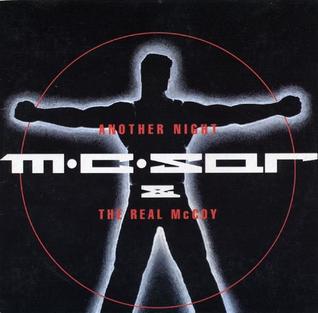
"Another Night" is a song by German Eurodance and pop music project Real McCoy. The single is featured on their hit album Another Night (1995), which was the American release of the project's second album, Space Invaders. The song was written and produced in Germany by Juergen Wind and Frank Hassas (Quickmix) in 1993 under the producer team name Freshline. It was released in Europe on 12 July 1993 by Hansa Records and two music videos were produced, directed by Nigel Dick and Angel Garcia.

"Lucky Love" is a 1995 song recorded by Swedish group Ace of Base. It is taken from their second album, The Bridge (1995). The song became their fifth worldwide single, and was the first single from the album to be released in Europe; the acoustic version of the song was the second single in the United States and Canada. "Lucky Love" also became the group's first number-one hit in Sweden and it also peaked at number-one in Finland. The single peaked within the top 10 in Belgium, Canada, Denmark, France, Hungary, Israel, Spain, and Zimbabwe. The song's lyrics describe the feeling of being a teenager in love and never forgetting that feeling.

"Beautiful Life" is a song by Swedish band Ace of Base, released on October 20, 1995 from their second album, The Bridge (1995). In North America, it was the first single released from the album; in Europe, it followed "Lucky Love" as the second single. Co-written by band member Jonas Berggren and produced by him with Denniz Pop and Max Martin, the single reached number 15 on both the US Billboard Hot 100 and the UK Singles Chart in December 1995. It reached number one on the Canadian RPM Dance/Urban chart and Billboard's Hot Dance Club Play chart. In 2017, BuzzFeed ranked "Beautiful Life" number 51 in their list of The 101 Greatest Dance Songs Of the '90s.

"Never Gonna Say I'm Sorry" is a song by Swedish band Ace of Base, released as a single on 11 March 1996. It was the third single taken from the band's second album, The Bridge (1995). In Europe, the song peaked at number six in Hungary, number 12 in Denmark and number 17 in Finland. In the US, it reached number six on the Billboard Bubbling Under Hot 100 Singles chart. And in Canada, it peaked at number 53 on the Canadian Hot 100 chart.

"All That She Wants" is a song by Swedish group Ace of Base. It was released in Scandinavia in August 1992 by Mega Records as the second single from the group's first studio album, Happy Nation (1992), and in the following year, it was released as the first single from the 1993 album The Sign in North America. Produced by Denniz Pop with group members Jonas Berggren and Ulf Ekberg, the drum beat was inspired by the Kayo song "Another Mother". Berggren and Ekberg also wrote the lyrics.
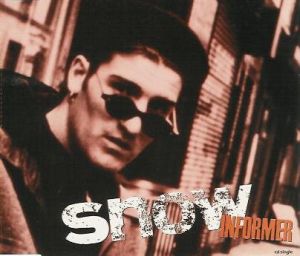
"Informer" is a song by Canadian reggae musician Snow, released in August 1992 by East West Records as the first single from his debut album, 12 Inches of Snow (1993). The song is well known for the line "a licky boom boom down" and for Snow's fast toasting and often unintelligible lyrics.

"I Can See Clearly Now" is a song written and recorded by American singer-songwriter Johnny Nash. It was the lead single from his twelfth album, I Can See Clearly Now (1972), and achieved success in the United States and the United Kingdom when it was released in 1972, reaching number one on the US Billboard Hot 100 and Cash Box charts. It also reached number one in Canada and South Africa. The song has been covered by many artists throughout the years, including a hit version by Lee Towers that reached no. 19 in the Dutch Top 40 in 1982, and another recorded by Jimmy Cliff for the motion picture soundtrack of Cool Runnings that peaked at no. 18 on the US Billboard Hot 100 in 1993.
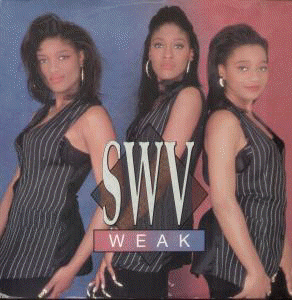
"Weak" is a song by American R&B vocal trio SWV from their debut studio album, It's About Time (1992). It was written and produced by Brian Alexander Morgan, who composed the lyrics based on a young person falling in love for the first time. Inspired by his crush on singer Chanté Moore, Morgan originally wrote the song for Charlie Wilson, but he later decided to give the song to SWV. Morgan later revealed that lead singer of SWV, Coko, did not like the song and gave him attitude during the recording of the single.
"Don't Turn Around" is a popular song written by Albert Hammond and Diane Warren. It was originally recorded by American singer Tina Turner and released as the B-side to her 1986 hit single "Typical Male". It has since been included on Turner's compilation album The Collected Recordings: Sixties to Nineties (1994), as well as featuring in the Tina musical since 2018.
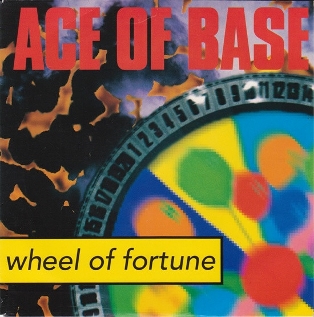
"Wheel of Fortune" is a song by Swedish pop group Ace of Base, released as their first single from the debut album, Happy Nation (1992). The song was first serviced to Danish radio in early 1992, through Mega Records, but failed to pick up much support. When re-promoted for a third time and released in stores on 29 June 1992, it entered the official Danish singles chart at number six, before later peaking at number two. It wasn't released elsewhere in Europe until 1993, following the success of their second single, "All That She Wants".

"Happy Nation" is a song recorded by Swedish group Ace of Base from their debut album with the same name (1992). It was first released in Scandinavia in December 1992 by Mega Records and later released twice in the UK. The first appearance was in October 1993, when it peaked at number 42, it re-entered the chart twelve months later at number 40. "Happy Nation" reached number-one on the singles charts of Denmark, Finland, France in 1993 and 1994. Its music video was directed by Matt Broadley. In 2008, the song was remade by Ace of Base for a remix kit.

"Living in Danger" is a song recorded by Swedish group Ace of Base. It was released in October 1994 by Arista and Mega as the seventh and final single from the group's debut album, Happy Nation and fourth single from their American debut release, The Sign (1993). Written by bandmembers Jonas Berggren and Ulf Ekberg, the single peaked at number 20 on the US Billboard Hot 100 and also topped the Billboard Hot Dance Club Play chart in December 1994. On the US Cash Box Top 100, it peaked at number ten. The single later reached number 18 on the UK Singles Chart in January 1995. Its music video was directed by Matt Broadley and filmed in Stockholm, Sweden. Ace of Base performed the song on the first ever MTV Europe Music Awards in Berlin, Germany in 1994. Q Magazine included "Living in Danger" in their list of the "1001 Best Songs Ever" in 2003.

"Moving On Up" is the seventh overall single from British band M People, and the second single from their second album, Elegant Slumming (1993). Written by band members Mike Pickering and Paul Heard, and produced by M People, it was released on 13 September 1993 by Deconstruction. The song peaked at number two on the UK Singles Chart and number one on the UK Dance Singles Chart and was the biggest selling M People single. It also became a top-40 hit on the US Billboard Hot 100 and peaked at number one on the Billboard Dance Club Songs chart. The accompanying music video for the song sees the band performing in a club.
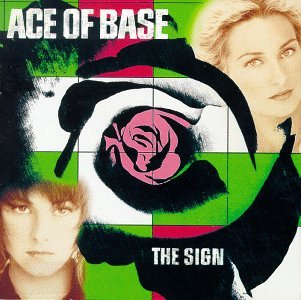
The Sign is a 1993 album by Swedish pop group Ace of Base, released as the band's debut album in North America and some Latin American countries by Arista Records. The Sign contains songs from Ace of Base's debut album, Happy Nation (1992) and the new songs "Don't Turn Around", "The Sign", and "Living in Danger" as well as revised versions of "Voulez-Vous Danser" and "Waiting for Magic".

"I Saw You Dancing" is a song by Swedish group Yaki-Da. It was released in 1994, as the lead single from their first studio album, Pride (1995), and is written and produced by Jonas Berggren from Ace of Base. The song was a top 10 hit in Denmark, Finland, Iceland, Israel, Malaysia, Norway and on the Canadian RPM Dance/Urban chart.



















